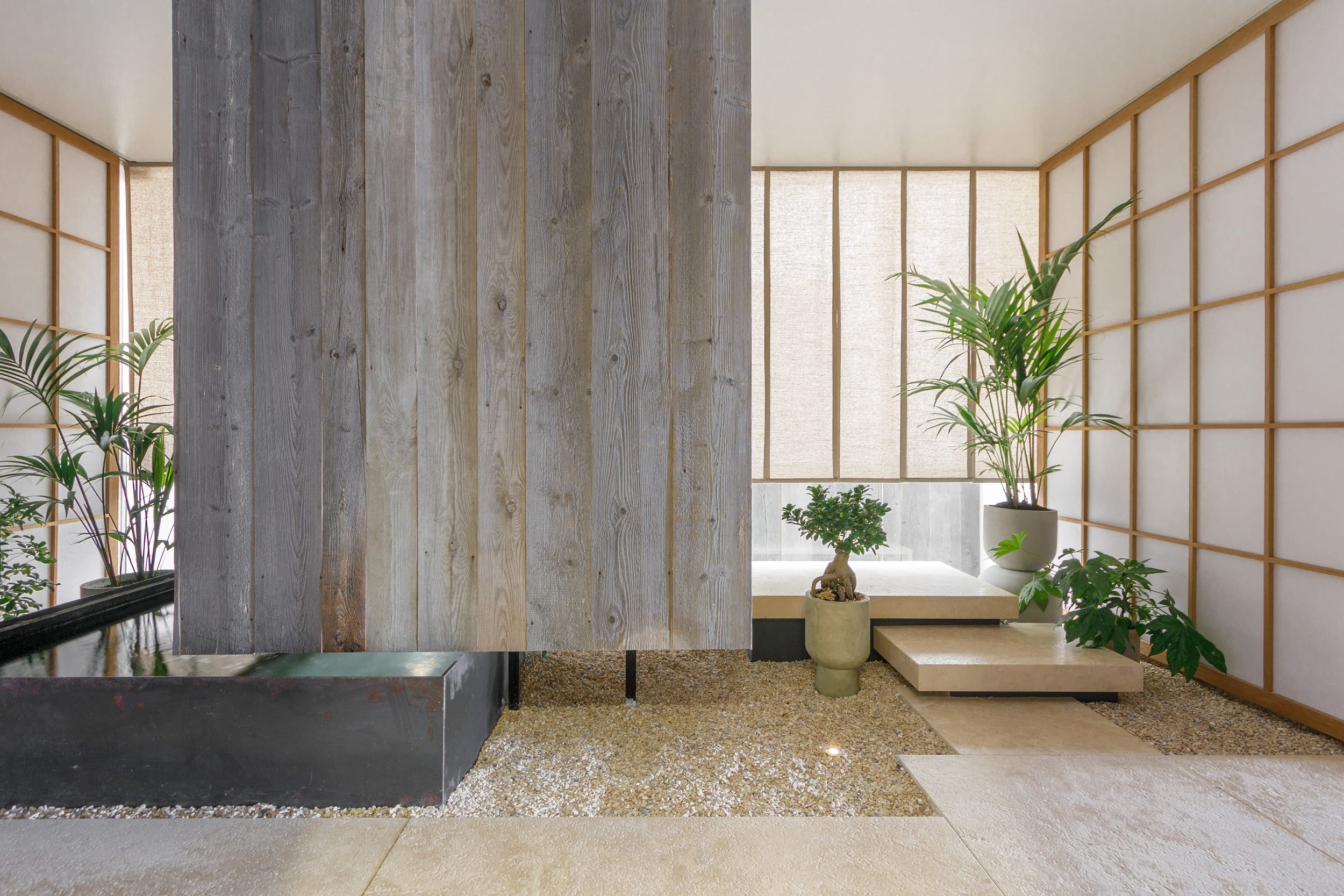Tanizaki’s Shadows
Gozo, Malta
Located on a cliff on a small Mediterranean island, this holiday home pays homage to Japanese idioms inspired by Junichirō Tanizaki’s famed essay, In Praise of Shadows.
One winter morning, when Maltese architect Chris Briffa visited a nondescript and irrationally long apartment in Malta’s sister island Gozo, he found that the light from the rising sun blinded much of the east-facing living room. On his return journey, whilst reading Tanizaki’s essay on the ferry ride, he had an idea, which his client Stephen – a seasoned carpenter - would skilfully bring to life, five years later.
Upon entry a surreal, quasi-outdoor space greets you. A weathered cabin hanging above a trough of water conceals a guest lavatory, complete with a floor hole looking over a shoal of koi. The depiction of Tanizaki’s obsession with the traditional bathroom is palpable, together with the feeling of being outdoors, sensorially separated from the rest of the house. The simulated courtyard, clad in local hardstone and floor to ceiling shoji doors, is topped by a reflective, light-emitting ceiling. By day, dim sunlight enters through noren curtains, into the fish pond, bounced off the stonework. By night, a stretched ceiling concealing LEDs, brightens the space to simulated daylight conditions, giving the impression of an overcast sky. Tanizaki’s essay, considered a classic description of the collision between the shadows of traditional Japanese interiors and the dazzling light of the modern age – is translated into architectural folly.
Two opposing sliding doors, one facing West the other East, lead to the separated sleeping and living areas. A timber-clad corridor reveals the sleeping areas, with bedrooms and bathrooms concealed behind shoji doors. The second door uncovers the spacious living area, and its breath-taking island views. What follows is a wabi-sabi visual essay of asymmetry, simplicity, tactility, austerity and intimacy, framing the forces of nature predominant in the wind-swept channel of water between the islands. Slatted oak walls filter daylight around the dark kitchen, while a series of contrasting materials incrementally define the cooking area.
A central, modular sofa is vaulted over by a timber space truss carrying bookshelves, storage, entertainment and a leafy trellis, while hiding lights and air-conditioning units. The studio’s iconic Red Blue Shelf (2011), still in production at Stephen’s workshop, is reproposed in monochromatic oak, transforming from bookshelf to interior architecture. A large opening faces the sea, letting in the sunlight which hits the warm latticework of timber details – its shadow play becomes the spectacle.
The austere dining table top, a three-metre slab of glass-fibre reinforced concrete, sits between solid oak blocks, deliberately placed in the middle of the space, perpendicular to the distant views, while facing works of art on opposite sides.
Artist Julien Vinet, who lived in Japan for several years exhibiting his work in traditional ink, was commissioned to create the artwork. He presented a series of black and white paintings which culminate in a cinema-sized triptych, entitled Waterfall, opposite the ‘readymade’ Pjanci III – upcycled, tin trays used to bake pastizzi, an iconic savoury pastry snack. Inside the bedrooms, Vinet’s art is hung within the warm interiors, where Briffa’s talent for capturing shadow play again takes centre stage, this time with the setting sun.
The essence of this project is a celebration of craft itself; an ode to the magnificence of sublime architecture combined with ultra-refined carpentry to harness the natural elements of light, air and water, thus elevating the well-being and harmony of those who inhabit the space.
Completed 2023
Images by Hanna Briffa









